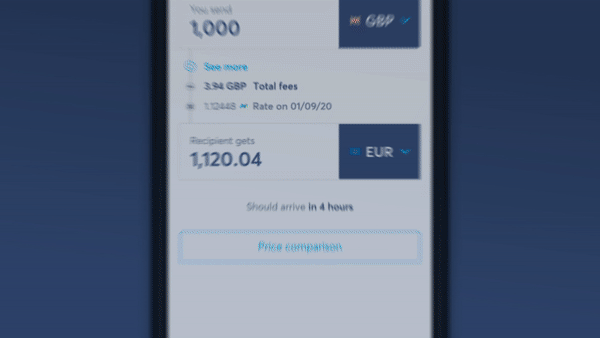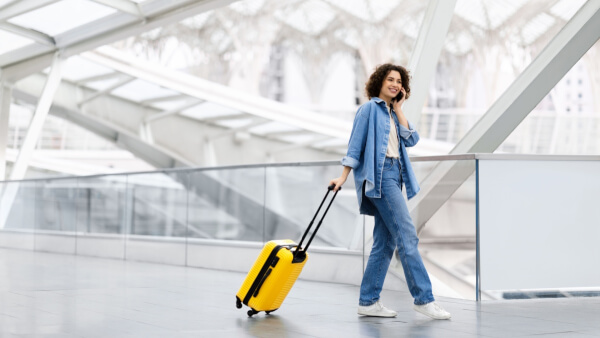Complete Guide to Student Discounts on International Flights from India
Complete guide to student discount on international flights from India. Discover how to get the best deals and save on your study abroad journey.

The United States of America has been a top destination for Indian students for decades. Learn what it takes to complete a US student visa application and what to expect from the process.
| 📝 Table of contents |
|---|
The opportunity to study overseas is exciting, but getting there is more complicated. Each student’s immigration situation is different, and while this article can act as guideposts for your journey, it is not to be taken as advice or recommendations. It is suggested to consult an immigration specialist or the US embassy directly for support for your student visa application.
A US student visa allows foreign students to study in the country. A US student visa can only be applied for and completed once you have been accepted to a SEVP-approved school or educational institution in the US.
To accept any international students, the US school must be in the Student Exchange Visitor Information System (SEVIS) and have a Student Exchange Visitor Program (SEVP). If you aren’t sure if your institution is SEVP approved, you can check the list on the DHS Study in the Stateswebsite.
Indian students can apply for a US student visa application and complete the process online. But note, you are likely to be required to give an in-person interview.
The application process is mostly determined by the US embassy or consulate that has jurisdiction over your permanent residence. And the consular officers can often be the deciding factor of your visa approval.
The US Embassy and consulates in India
There is also a virtual consulate for Bengaluru, Karnataka.
There are the two main options for student visas for the US depending on the type of education you are looking to get :
| Educational Institute | Type of Student Visa |
|---|---|
| Vocational | M Visa |
| Private elementary school | F Visa |
| High School | F Visa |
| Seminary | F Visa |
| Conservatory | F Visa |
| University or college | F Visa |
| Recognized nonacademic institution (not language training program) | M Visa |
Whether it is a F or M visa, you are expected to partake in at least 18 hours per week of study for the program to qualify.
If you want to learn more about opportunities to study in the US, EducationUSA is a helpful resource to understand graduate and postgraduate options.
Spouses or children that will be traveling and residing with you during your program will require a F-2 or M-2 visa and need to go through a similar application process.
Not adhering to your US student visa rules can result in your student visa being cancelled or revoked. And could possibly make you ineligible for future travel to the US. Here are the major do’s and don'ts of a US student visa¹:
| Do’s ✅ | Don’ts ❌ |
|---|---|
| Keep your DS-160 form numbers and attend your visa interview | Stay longer than 60 days after your program’s end date per the Form 1-20 |
| Ensure you have your signed Form I-20 from your institution or school | Make travel plans or arrangements before you get your visa |
| Be clear if you are eligible for work-study based on your US institution | Try to enter the US on your student visa more than 30 days before your program's start date |
| Use the same application process when you are renewing your visa | Forget to submit applications for your spouse or children if they will be staying with you |
| Present your passport, student visa and Form I-20 at your US port of entry | Study at a US institution if you are on a visitor visa |
There are also 2 main fees to be paid when you apply for a US student visa.
Both fees will have to be paid before your interview at the US embassy or consulate. More on this later.
The US student visa process for Indian students is mostly online but does require important offline and in-person components to be completed. Let’s walk through the steps needed to complete the US student visa application²:
| 🚨 As of April 30, 2021, American president Joe Biden has suspended most immigrant travel to the US due to the COVID-19 situation globally. Indian students may be exempt by a National Interest Exception if their program starts after August 1, 2021 and they already have their F-1 or M-1 visa. Students who are looking to apply for a new student visa should contact the relevant US embassy or consulate.³ |
|---|
The US has specific requirements for the documents you need to provide alongside your application. They have also outlined the evidence required to meet the financial ability, and fees. Let’s break down each.
Before getting accepted to your US school of choice, you would have needed to show ability to pay for tuition, books, living expenses and travel. The evidence to show financial ability to the school may also need to be provided in two more instances. Once at the time of your student visa application, and the second at entry into the US.
You will need to show evidence of your financial ability to cover your costs, and costs of any family members that are staying with you during the length of your program. The evidence can be⁴:
How much you need to show for meeting the financial requirement is going to be dependent on the school or university you choose. Each institution has their own metrics to qualify, and you will need to show proof of the ability to pay yourself or through scholarships or loans to the school.
To ensure that your visa application gets processed smoothly, you will need to provide all the documents asked of you in the application. The documents can differ based on your embassy or consulate and your own specific submission. Here is a list of documents that are required:
Additionally, you may also need to provide the following⁵:
You may need to show additional documentation or answer questions by consular officers at the US embassy or consulate to prove you are qualified for a student visa.
The US embassy or consulate you went to will be able to tell you how long the processing time will be for your specific application. This is depending on if the embassies are accepting and processing new applications.
Overall, you can expect it can take 5-6 weeks for your F visa application to be processed. But depending on the American institution you applied to, it can take more or less time.⁶
There are 2 fees to be paid for your US student visa application. The I-901 SEVIS fee is $350 and the application fee for a US student visa is $160⁷. The application fee and the I-901 SEVIS fee is non-refundable and is required to be paid to have your application processed⁸. Payment is also required before your in-person interview.
Let’s take a look at what both the US student visa application and the I-901 SEVIS fee looks like in Indian Rupees:
| US Dollars 🇺🇸 | Indian Rupees 🇮🇳 | |
|---|---|---|
| Application Fee | $160 | ₹11,741 |
| I-901 SEVIS Fee | $350 | ₹25,684 |
| Total | $510 | ₹37,426 |
*All INR prices shown are converted at the mid-market exchange rate of USD $1 = ₹73.38 as of May 10, 2021
The US student visa application fee can be paid by any of the following options at the embassy at the time of your interview appointment:
| 🚫 Debit cards and personal cheques are not accepted. ⁹ |
|---|
The Form I-901 SEVIS Fee has to be paid online. The embassy or consulate will not be able to take payments for it.

Over 10 million people already use Wise to send money around the world at the real exchange rate. With the Android/ iOS app and easy to use website, you can send money to a local bank account in the US right from your living room.
And if you are already studying far from home, get a free Wise account in the US. It is a single global wallet that lets you hold, send, and spend in USD, EUR, GBP, CAN and more like a local.
| 🖨 If you found this guide helpful or want to refer to it later, right click on the screen and click ‘Print’, then save it as a PDF |
|---|
Sources
*Please see terms of use and product availability for your region or visit Wise fees and pricing for the most up to date pricing and fee information.
This publication is provided for general information purposes and does not constitute legal, tax or other professional advice from Wise Payments Limited or its subsidiaries and its affiliates, and it is not intended as a substitute for obtaining advice from a financial advisor or any other professional.
We make no representations, warranties or guarantees, whether expressed or implied, that the content in the publication is accurate, complete or up to date.

Complete guide to student discount on international flights from India. Discover how to get the best deals and save on your study abroad journey.

Compare the best travel insurance options for Indian students traveling to studying abroad. Learn about coverage, options, and requirements.

Compare the best health insurance options for Indian students traveling to studying abroad. Learn about coverage, options, and requirements.

Complete Guide to baggage allowance for Indian students traveling abroad. Learn more about extra allowance for international students.

Navigating cash allowances for Indian students traveling to the USA. Know the limits, declarations, and smarter ways to manage your finances abroad.

Understanding TCS on education loan remittances from India. Learn how to minimize TCS and save money with Wise, a convenient option to send money abroad.